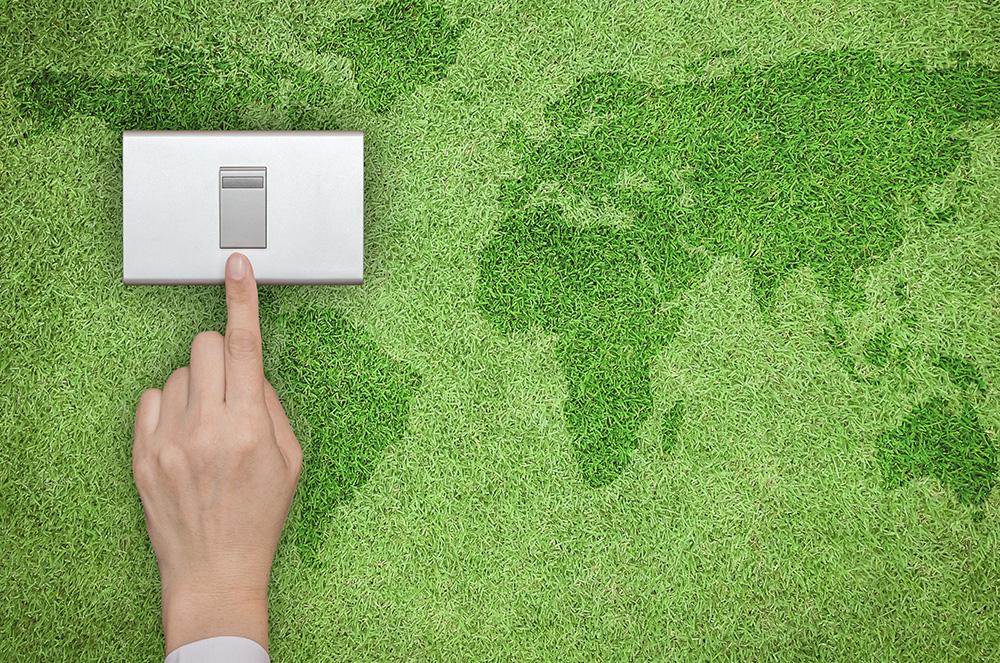
Let's Make Our Planet Green
Introduction
Going green refers to the process of implementing crucial lifestyle changes tailored at helping individuals live in a more eco-friendly manner. It entails individuals becoming environmentally aware hence changing their overall behavior and lifestyle, which helps reduce the overall amount of waste and pollution released to the environment. The process of going green calls for the understanding of green products and their subsequent use in the process of averting environmental pollution. Going green is highly beneficial as it leads to healthier lifestyles, creates and sustains a clear environment, saves money, and preserves resources for future generations. Green products can be identified by their characteristics such as renewability, reusability, and biodegradability. This disqualifies some products such as plastics from the green products. Environmental preservation campaigns through both governmental and non-governmental agencies would play a crucial role in enabling individuals the concept of environmental protection and sustainability.
This essay explicates green products, the characteristics of green products, and highlights ways to go green.
Green Products
Green products are defined as non-toxic, water and energy efficient, and harmless products to the environment. It is vital to note that products can only be certified as green in cases where they meet the norms and requirements of government environmentally preferable products (EPP) program. Some of the most significant green products are discussed below.
Most wood products such as firewood or furniture are regarded green products because of the fact that trees occur naturally and can be easily replaced through a regular planting process. Individuals are advised to ensure they embrace the required products even as they continue using wood products in order to preserve the environment and avert the destruction of catchment areas.
Energy conservation light bulbs are also categorized more effectively as green products (Kemp and Stephani 46). They meet the threshold of green products because of their efficiency in the use of energy and the preservation of the environment.
Silk and cotton derive the recognition of green products as they occur naturally in the ecosystem and do not lead to the depletion of the environment. They are easily biodegradable and reusable products in the environment. This helps in the continuous efforts to preserve the environment.
Interestingly, the advancing level of technology has made it possible for companies such as Nokia and Samsung to come up with green mobile phones. In 2008, Nokia marketed a first phone with no toxic flame retardants. Some of the most notable green mobile phones include Samsung Blue Earth, LG-Solar powered phone, and ZTE Coral 200 Solar.
Plastics and nylon are not regarded as green products because they are not biodegradable and result in enormous environmental pollution when burnt. This implies that plastics and nylons do not meet the requirements government environmentally preferable products (EPP) program for green products.
Characteristics of Green Products
Several characteristics relate directly to green products. One of the most vital characteristics is that green products are renewable. This implies that these products can be converted into other forms and used for different products. Renewability means that the products can be manufactured further and applied to other crucial uses that boost human survival in an eco-friendly environment. The ease of renewal of these products emerges from the fact that they are locally available from manufacturers and nature. For instance, waste cartons can be converted into tissue paper through further manufacturing processes.
Notably, green products can also be reused either wholly or through disassembly. Reusability implies that these products can be effectively applied to other uses hence saving on money and facilitating environmental sustainability (Ross and Young 35). Reusability ensures that there are no wastages as these products are put to other significant uses in the society. Environmental sustainability is promoted through continuous reuse of green products hence leading to a better ecosystem. For example, old clothing can be reused as rags.
Biodegradability is another crucial characteristic of green products. Biodegradability relates to the fact that these products can easily decompose when deposited hence improving the fertility of the soil or promoting the process of oil formation. The biodegradable nature of green products ensures that they do not result into unnecessary pollution of the environment. This also leads to benefits in terms of improved fertility of the soil and the creation future energy resources. Thus, individuals are encouraged to utilize them as they can easily decompose leading to the best benefits.
These products do not also contain highly toxic compounds, and their subsequent production does not lead to the emission of toxic substances into the environment. Green products can be effectively burnt without the emission of toxic substances into the environment. This makes it easier for individuals to preserve the environment while using green products (Kneidel and Kneidel 61). The absence of toxic compounds ensures that sustainability is enhanced in the environment hence creating a safer ecosystem for individual’s survival. This also ensures that the ozone layer is significantly protected hence reducing the effects of global warming all over the world.
Ways of Going Green
Most individuals always find it difficult to embrace the use of green products in their daily lives, and this continues to put the environment at an enormous risk. This begs the question, how do we go green? The measures discussed below would help the promotion of environmental sustainability and better living.
One of the most crucial ways of going green is to engage in continuous recycling of products such as plastic bottles, newspapers, cardboards, glass, and aluminum. As noted earlier, recycling entails converting these products into other important uses rather than disposing them. Individuals can recycle plastic bottles by putting them into other uses that would not result in their disposal (Goleman and Norris 669). This ensures that more money and the environment are saved as the recycling process of these products continues.
Additionally, individuals can decide to go green by avoiding the purchase of bottled water. It is vital to note that bottled water is extremely expensive, and the purchased plastics would automatically lead to the creation of large amounts of waste. This is unfriendly to the environment hence putting it at risk. Instead of purchasing bottled water, individuals can purchase water filters to purify their tap water.
Individuals can also go green by investing in high-quality, long-lasting, and eco-friendly products. Notably, the initial costs of carrying out such investments may be extremely high, but this is an important step in the long-run in facilitating environmental preservation. Investing in high-quality long-term products means that people will not have to replace them over a short period as they continue with their operations (Haffner 14). This will automatically translate into less wastes being disposed to the environment hence creating eco-friendly living conditions.
Conclusion
In conclusion, it is possible for the whole world to go green. This depends on the attitude and the approaches employed by individuals in their daily living and operations. Green products do not contain toxic compounds and are highly harmless to the environment ensuring that environmental sustainability is achieved. These products may include naturally acquired cotton and silk, wood, eco-friendly mobile phones, and energy conservation light bulbs. Individuals are required to put in place crucial measures such as averting the purchase of bottled water, investing in quality and long-term products, and recycling of plastics and other materials in the pursuit of a greener environment. The crucial point to underscore is that it is possible for individuals to go green as long as they can embrace the recommended steps.
Works Cited
Goleman, Daniel and Gregory Norris. "Going Green: What Must be Done?" Green Environment
(2010): 668-670.
Haffner, Shell. "Document Management Go Green, Save Green." EBSCOhost (2010): 12-15.
Kemp, Roger L. and Carl J. Stephani. Cities Going Green: A Handbook of Best Practices. New
York: McFarland, 2011. Print.
Kneidel, Sally and Sadie Kneidel. Going Green: A Wise Consumer's Guide to a Shrinking
Planet. Chicago: Fulcrum Pub, 2008. Print.
Ross, John and Nicole Young. Picture Yourself Going Green: Step-by-Step Instruction for Living
a Budget-Conscious, Earth-Friendly Lifestyle in Eight Weeks or Less. London: Cengage Learning, 2011. Print.




